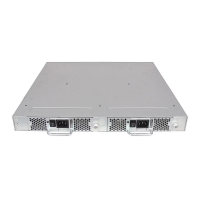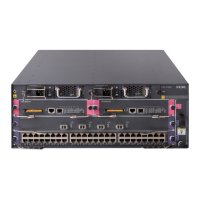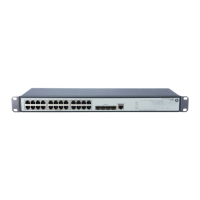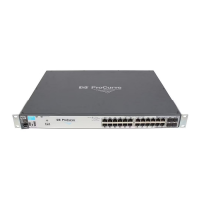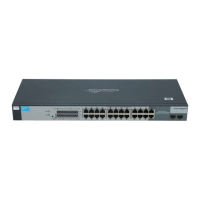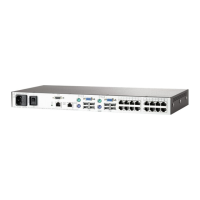Fabric OS Administrator’s Guide 155
53-1002446-01
IP Filter policy
7
1. Log in to the switch using an account with admin permissions, or an account associated with
the chassis role and having OM permissions for the IPfilter RBAC class of commands.
2. Enter the ipFilter
–-activate command.
Deleting an IP Filter policy
You can delete a specified IP Filter policy. Deleting an IP Filter policy removes it from the temporary
buffer. To permanently delete the policy from the persistent database, run ipfilter
--save. An active
IP Filter policy cannot be deleted.
1. Log in to the switch using an account with admin permissions, or an account associated with
the chassis role and having the OM permissions for the IPfilter RBAC class of commands.
2. Enter the ipFilter
-–delete command.
3. To permanently delete the policy, enter the ipfilter
--save command.
IP Filter policy rules
An IP Filter policy consists of a set of rules. Each rule has an index number identifying the rule.
There can be a maximum of 256 rules within an IP Filter policy.
Each rule contains the following elements:
• Source Address: A source IP address or a group prefix.
• Destination Port: The destination port number or name, such as: Telnet, SSH, HTTP, HTTPS.
• Protocol: The protocol type. Supported types are TCP or UDP.
• Action: The filtering action taken by this rule, either Permit or Deny.
A rule type and destination IP can also be specified
Source address
For an IPv4 filter policy, the source address has to be a 32-bit IPv4 address in dot decimal notation.
The group prefix has to be a CIDR block prefix representation. For example, 208.130.32.0/24
represents a 24-bit IPv4 prefix starting from the most significant bit. The special prefix 0.0.0.0/0
matches any IPv4 address. In addition, the keyword any is supported to represent any IPv4
address.
For an IPv6 filter policy, the source address has to be a 128-bit IPv6 address, in a format
acceptable in RFC 3513. The group prefix has to be a CIDR block prefix representation. For
example, 12AB:0:0:CD30::/64 represents a 64-bit IPv6 prefix starting from the most significant bit.
In addition, the keyword any is supported to represent any IPv6 address.
Destination port
For the destination port, a single port number or a port number range can be specified. According
to IANA (http://www.iana.org), ports 0 to 1023 are well-known port numbers, ports 1024 to 49151
are registered port numbers, and ports 49152 to 65535 are dynamic or private port numbers.
Well-known and registered ports are normally used by servers to accept connections, while
dynamic port numbers are used by clients.

